Themed collection Understanding Crystallisation

Correction: Nucleation in sessile saline microdroplets: induction time measurement via deliquescence–recrystallization cycling
Faraday Discuss., 2022,235, 198-198
https://doi.org/10.1039/D2FD90015G
Poster list
Faraday Discuss., 2022,235, 582-586
https://doi.org/10.1039/D2FD90031A
List of participants
Faraday Discuss., 2022,235, 587-590
https://doi.org/10.1039/D2FD90030K
On the crystal forms of NDI-C6: annealing and deposition procedures to access elusive polymorphs
Here we report the full thermal characterization of an n-type NDI derivative semiconductor, NDI-C6. It has five polymorphs, Form ε is only obtained in thin films.
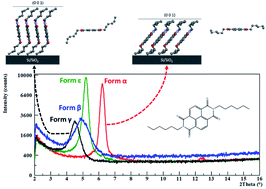
Faraday Discuss., 2022,235, 490-507
https://doi.org/10.1039/D1FD00100K
Progress in understanding crystallisation: a personal perspective
A personal impression of the progress that has been made towards appreciating the complexity of crystallisation over the past forty years, to put this Faraday Discussion in context.

Faraday Discuss., 2022,235, 569-581
https://doi.org/10.1039/D2FD00077F
The role of solvation in proton transfer reactions: implications for predicting salt/co-crystal formation using the ΔpKa rule
This paper reviews the theoretical background of the ΔpKa rule and highlights the crucial role of solvation in determining the outcome of the potential proton transfer from acid to base.

Faraday Discuss., 2022,235, 446-466
https://doi.org/10.1039/D1FD00081K
Significance of atomic-scale defects in flexible surfaces on local solvent and ion behaviour
This paper investigates the significance of atomic-scale surface defects on the mobility of ions. Findings suggest that certain topological features can act as active sites to promote ion clustering and increase local ionic concentration.
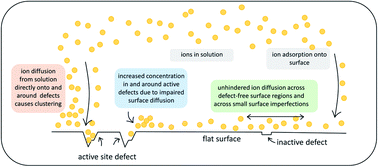
Faraday Discuss., 2022,235, 289-306
https://doi.org/10.1039/D1FD00082A
Influence of anisotropy on heterogeneous nucleation of gold nanorod assemblies
This study analysed for the first time heterogeneous nucleation with anisotropic nanoparticles as a model system for non-spherical building units.
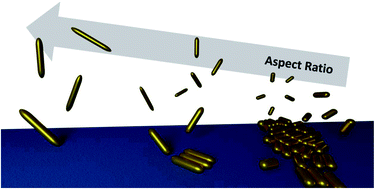
Faraday Discuss., 2022,235, 132-147
https://doi.org/10.1039/D1FD00087J
Spiers Memorial Lecture: Assembly-based pathways of crystallization
We review recent investigations into crystal growth by particle attachment, with an emphasis on oriented attachment.

Faraday Discuss., 2022,235, 9-35
https://doi.org/10.1039/D2FD00061J
Possible embryos and precursors of crystalline nuclei of calcium carbonate observed by liquid-cell transmission electron microscopy
We report the role of an amorphous phase and embryo at the beginning of the nucleation of CaCO3 from solutions of relatively low supersaturation.
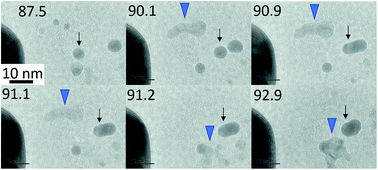
Faraday Discuss., 2022,235, 81-94
https://doi.org/10.1039/D1FD00125F
Superlattice ordering transitions driven by short-range structure in barium calcium carbonates
Many carbonate superlattices form in nature, including dolomite and norsethite. Here, we show that carbonate superlattice ordering can be driven by short-range structure that is controlled by carbonate ion (re)orientation.
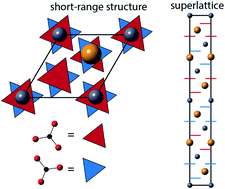
Faraday Discuss., 2022,235, 416-432
https://doi.org/10.1039/D1FD00086A
The structural pathway from its solvated molecular state to the solution crystallisation of the α- and β-polymorphic forms of para amino benzoic acid
Comparison between solid- and solution-state intermolecular interactions identify solvent-dependant pathways directing crystallisation into different polymorphic forms.
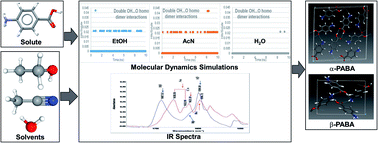
Faraday Discuss., 2022,235, 467-489
https://doi.org/10.1039/D1FD00112D
Nucleation in sessile saline microdroplets: induction time measurement via deliquescence–recrystallization cycling
With the aim of quantifying nucleation kinetics, a method for induction time measurement on sessile microdroplets has been developed based on deliquescence–efflorescence cycle and image analysis.
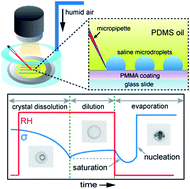
Faraday Discuss., 2022,235, 183-197
https://doi.org/10.1039/D1FD00090J
Simulating intergrowth formation in zeolite crystals: impact on habit and functionality
A kinetic Monte Carlo approach for modelling crystal growth, allowing simulation of crystal habit and surface fine structure in materials containing high levels of stacking faults.

Faraday Discuss., 2022,235, 343-361
https://doi.org/10.1039/D1FD00097G
Multistep nucleation compatible with a single energy barrier: catching the non-classical culprit
A nucleation pathway based on the mesoscopic nucleation theory reveals that precursor clusters are purely induced by kinetics.
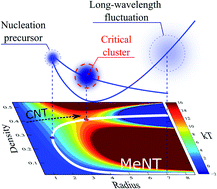
Faraday Discuss., 2022,235, 95-108
https://doi.org/10.1039/D1FD00092F
The unexpected dominance of secondary over primary nucleation
Secondary nucleation is the dominant nucleation mechanism, even under conditions considered to lead to primary nucleation. The highly productive antisolvent crystallization is therefore a viable crystallization-enhanced deracemization technique to control product chirality.
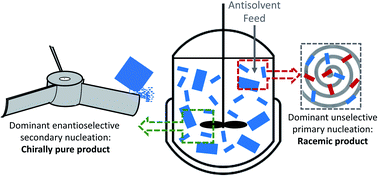
Faraday Discuss., 2022,235, 109-131
https://doi.org/10.1039/D1FD00098E
Mechanism of ice nucleation in liquid water on alkali feldspars
Patches of (100) crystalline surface in perthite feldspars are confirmed to induce ice nucleation in liquid water and from water vapor.

Faraday Discuss., 2022,235, 148-161
https://doi.org/10.1039/D1FD00115A
On the mechanism of calcium carbonate polymorph selection via confinement
This paper discusses possible mechanisms for polymorph selection during crystallization of CaCO3 in confinement.

Faraday Discuss., 2022,235, 433-445
https://doi.org/10.1039/D1FD00111F
Precrystallization solute assemblies and crystal symmetry
The structures of the dominant solute species and of the incorporating solute complexes do not correlate with the symmetry of the crystal lattice. Crystal symmetry provides no shortcuts on the road to the understanding and control of crystallization.
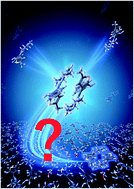
Faraday Discuss., 2022,235, 307-321
https://doi.org/10.1039/D1FD00080B
A zeolite crystallisation model confirmed by in situ observation
Zeolite crystallisation was followed in situ using moving electrode electrochemical impedance spectroscopy. Zeolite nucleation and growth could be modeled by a two-step mechanism.
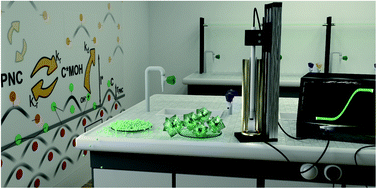
Faraday Discuss., 2022,235, 162-182
https://doi.org/10.1039/D1FD00093D
Theoretical aspects of the growth of a non-Kossel crystal from vapours: the role of advacancies
The theory of the growth of a multicomponent crystal, considering the diffusion and generation of advacancies and applied stress, is developed.
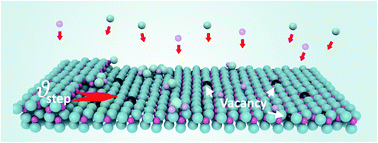
Faraday Discuss., 2022,235, 362-382
https://doi.org/10.1039/D1FD00083G
Manipulation of amorphous precursors to enhance zeolite nucleation
This study examines ways to manipulate the composition and colloidal stability of amorphous (alumino)silicate precursors that are prevalent in nanoporous zeolite syntheses.
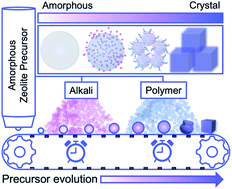
Faraday Discuss., 2022,235, 322-342
https://doi.org/10.1039/D1FD00096A
Multiple pathways in NaCl homogeneous crystal nucleation
The flux of trajectories in an extended reaction coordinate space characterising NaCl crystal nucleation pathways from biased and unbiased molecular dynamics simulations reveals multiple routes to phase separation far into the metastable zone.
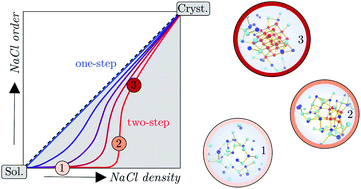
Faraday Discuss., 2022,235, 56-80
https://doi.org/10.1039/D1FD00089F
The influence of iodide on the solution-phase growth of Cu microplates: a multi-scale theoretical analysis from first principles
We used first-principles density-functional theory and absorbing Markov chains to quantify the role of iodine in the solution-phase growth of Cu microplates.
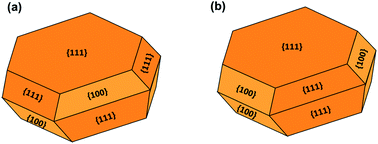
Faraday Discuss., 2022,235, 273-288
https://doi.org/10.1039/D1FD00091H
Studying the impact of the pre-exponential factor on templated nucleation
This study suggests that the heterogeneous surface enhances the nucleation rate via hydrogen bond formation with both glycine and diglycine.
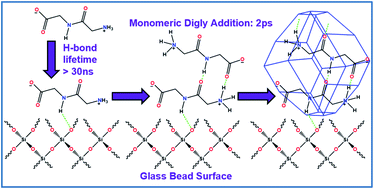
Faraday Discuss., 2022,235, 199-218
https://doi.org/10.1039/D1FD00101A
Interplay of structural and dynamical heterogeneity in the nucleation mechanism in nickel
By analysing transition path sampling trajectories, we show that dynamical heterogeneity plays a key role in the mechanism of crystal nucleation in an elemental metal, nickel
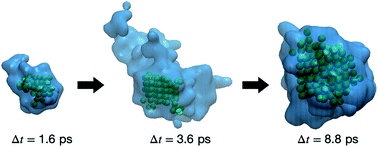
Faraday Discuss., 2022,235, 406-415
https://doi.org/10.1039/D1FD00099C
Micron-sized biogenic and synthetic hollow mineral spheres occlude additives within single crystals
Occlusion of micron-sized algae cells and calcitic hollow spheres within calcite single crystals, mediated by the positively charged polymer poly(allylamine hydrochloride). Both objects are used to transport functional additives to the host lattice.
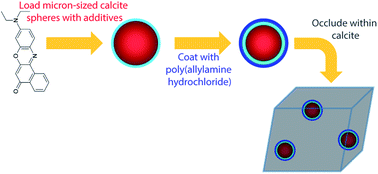
Faraday Discuss., 2022,235, 536-550
https://doi.org/10.1039/D1FD00095K
Solvent-mediated isotope effects strongly influence the early stages of calcium carbonate formation: exploring D2O vs. H2O in a combined computational and experimental approach
We explore solvent-mediated isotope effects of H2O vs. D2O in the early stages of CaCO3 formation, computationally and experimentally. Distinct and complex effects occur, while nucleation appears to proceed “more classically” in D2O than in H2O.
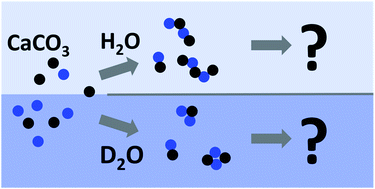
Faraday Discuss., 2022,235, 36-55
https://doi.org/10.1039/D1FD00078K
Atomic-scale structures and dynamics at the growing calcite step edge investigated by high-speed frequency modulation atomic force microscopy
We have investigated the calcite growth mechanism by directly imaging atomic-scale structural changes at the growing step edges with high-speed frequency modulation atomic force microscopy (HS-FM-AFM).
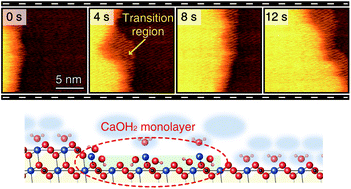
Faraday Discuss., 2022,235, 551-561
https://doi.org/10.1039/D1FD00084E
Understanding crystal nucleation mechanisms: where do we stand? General discussion
Faraday Discuss., 2022,235, 219-272
https://doi.org/10.1039/D2FD90021A
Controlling polymorphism: general discussion
Faraday Discuss., 2022,235, 508-535
https://doi.org/10.1039/D2FD90023H
Growing crystals by design: general discussion
Faraday Discuss., 2022,235, 383-405
https://doi.org/10.1039/D2FD90022J
Learning lessons from nature – the future of biomimetics: general discussion
Faraday Discuss., 2022,235, 562-568
https://doi.org/10.1039/D2FD90024F
About this collection
We are delighted to share with you a selection of the papers associated with a Faraday Discussion on Understanding Crystallisation. More information about the related event may be found here: http://rsc.li/crystal-fd2022. Additional articles will be added to the collection as they are published. The final versions of all the articles presented and a record of the discussions will be published after the event.
Crystallisation, the spontaneous arrangement of molecular building blocks into ordered solid particles, is a fascinating phenomenon. Understanding the dynamic, molecular-scale processes that underlie crystal nucleation and growth holds the key to designing the production of specific crystalline materials. The ability to induce crystallisation how, when and where we want it is key to material synthesis. Such capabilities will transform industrial and environmental sectors, including healthcare, formulated products, oil and gas, water, mining and advanced materials. The meeting will cover 4 main themes: Understanding crystal nucleation mechanisms: where do we stand?, Growing crystals by design, Controlling polymorphism and Learning Lessons from Nature – the future of biomimetics.
On behalf of the Scientific Committee, we hope you join us and participate in this exciting event, and that you enjoy these articles and the record of the discussion.